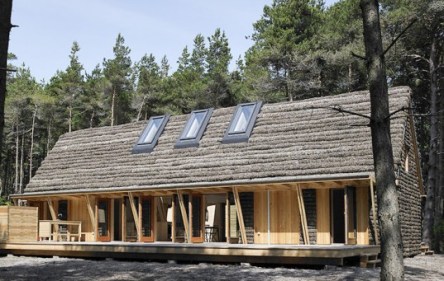Building smarter requires low upfront costs, quick returns, and mechanisms to protect the longevity of our investments. A new wave of insulating materials can reportedly do all of that for our properties, so why haven’t they gained more buzz? Insulation that’s affordably priced, durable, fire resistant, and long-lasting is hard to come by, though not impossible. Seaweed had been used by residents on the Danish island of Læsø for hundreds of years before falling out of fashion. It could be making a comeback in the nation and throughout the world. Læsø’s seaweed cottages of old are reminiscent of scenes from The Hobbit: tiny abodes with low roofs and shady interiors nestled in idyllic forests. Those aren’t the living conditions that many of us face. Fortunately, Realdania has created a modern seaweed material that fits into even the most metropolitan landscape. Why seaweed? Why not? A properly laid seaweed roof or “siding” can last for 100-150 years with basic upkeep, drastically reducing maintenance and replacement costs in comparison to even the best architectural shingles or Hardieplank. Seaweed insulates naturally, comparable to mineral wool, while providing a fireproof, non-toxic, CO2-neutral and easily renewable building material. It’s the sustainable solution that should be a serious competitor but simply hasn’t gained much traction in the States. Part of its unpopularity goes back to the aesthetic. To most, it’s ugly. The traditional thatching techniques—artfully piling and twisting loose seaweed—result in a home fit for Middle-earth. The more modern approach still looks heavy and otherworldly but its presentation is slightly more suitable for modern tastes. It holds promise as an insulating alternative that serves double-duty as an exterior covering. For those who have no interest in the textured appearance of seaweed, Ecovative has introduced a series of Mushroom© Materials to...

